The popularity of digital marketplaces for various types of products is increasing day by day. Especially, when there is a sudden turnaround in the fortunes of the NFTs, then it makes sense for the NFT marketplaces to be involved. Probably the most talked about topic in the cryptosphere, the NFT Marketplaces will be the place where the general public can get a chance to interact with the creators of content. These are the entities that are responsible for facilitating the trading of the NFTs. To be honest, every content creator has a chance to become a prominent marketman just by participating in the NFT Marketplaces.
In this article, we will talk about the various steps involved in creating a NFT marketplace. We will also cover the cost of building it.
What is an NFT Marketplace?
Non-fungible token marketplaces are Web3 applications that allow people to buy and sell various types of NFTs. There are various kinds of marketplaces that are open to the public, such as those that allow people with crypto wallets to buy and sell their own NFTs. However, there are also marketplaces that are not open to the public and only allow certain companies and brands to sell their NFTs.
With a NFT marketplace, people can easily create an account and sell their digital artworks. Usually, niche marketplaces are more in demand than standard ones due to their specialized features and their ability to sell various types of art.
How does the NFT Marketplace Work?
The users of an NFT marketplace must first install a digital wallet to operate. This app stores the data of the owner's files on the blockchain, which is different from the data stored on a disk drive. In addition, it allows users to create collections by displaying the work or digital item they want to buy. They can then choose the payment token they want to accept.
After the item has been listed, the transaction will be created following the auction. The creator's wallet then launches a smart contract to spell out the terms of the deal between the buyer and the seller. This deal is then automatically generated and validated by the blockchain network.
The transaction is then irreversible, as various operational costs are involved in a digital transaction. For instance, the energy costs associated with brokering a transaction are usually included in the cost of NFT. As a result, marketplaces that use NFT charge a fee whenever funds are transferred.
Things to know before build NFT marketplace
Non-Fungible Token standards
The standards that are used to create NFTs are the ones that make sure that the token will behave properly and efficiently. There are currently two standards that are used to create an NFT: the Ethereum Improvement Proposal ERC-721 and the Ethereum Improvement Proposal ERC-1155.
The efficiency of an NFT is also improved by using the "transferFrom" feature, which allows a blockchain to transfer assets from one owner to another.
Non-fungible Token Metadata
The concept of the NFT space is also known as "OwnerOf." This allows users to easily find the owner of the token.
Legal documentation
The legal documentation of an NFT also includes details about the company's formation, IP consideration, privacy policy, and terms of service.
How to create a NFT marketplace?
To create a marketplace you have to consider several phases of creation. Let's go over each of them.
Phase 1. Discovery
The Discovery phase is the most crucial step in the development of your NFT marketplace. It involves gathering information about your project's technical feasibility and determining its technical viability.
Some questions that are worth answering in this phase:
What the type of NFT do you want to work?
How well do you know about it?
Do you know your audience?
Who are your competitors?
How to monetize your platform?
What token protocol is more preferable for you and why?
What technology stack do you need?
Before you start working on a project, it's important that you first gather information about the platform structure, roles, front-end and back-end operations. Involving software architects will allow you to get a good idea of the technology's capabilities and how it will be implemented. And a good business analyst has the necessary skills to create comprehensive architecture documentation that will also help you get a good idea of the hosting requirements.
Phase 2. Development
After gathering information about the site's features and user flows, designers and business analysts start working on the wireframe and layouts. The goal is to create a well-designed and accurate representation of the website's user interface.
The development can be conditionally divided into 3 groups of works. They are:
First of all, UX/UI designers are responsible for creating a well-designed and user-friendly interface good with understanding of the various requirements of your target audience and market trends.
When building a NFT marketplace, the back-end development process does not look the same as it would when it was developed on a traditional platform. Since the NFT platform is a decentralized one, most of the data is stored on a blockchain. The development of smart contracts and back-end systems is a huge part of the work that goes into building a successful platform. This includes working on various aspects of the ecosystem such as the marketplace, blockchain, and wallets. The internal structure and interface of the site should be simple, and should not be complex.
The front-end of a NFT platform is the part of the system that handles the interactions between the users and the platform. This is the main task during this phase. The main objective of this phase is to ensure that the platform is easy to manage and reliable.
Phase 3. Testing
During this phase, QA team should also perform various tests to ensure that the code is free of bugs and works exactly as intended. They should also check the content of the pages and perform other tests to ensure that the platform is safe and secure. It is also necessary to check the operation of the NFT marketplace on the staging server
Phase 4. Deployment & Support
Finally, it is the time when the team successfully deploys the NFT marketplace on the production server. But they should then start working on the support services to help the users navigate through the various features of the platform. This step should also include planning for the future development of the platform to meet the needs of the users.
Before talking about the cost of creating an NFT marketplace, it is worth mentioning that it can vary depending on the number of features that you decide to include. Let's talk about some of the most essential features that you need to include when building a successful NFT marketplace.
The must-have features for NFT marketplace:
The Storefront section of the NFT marketplace provides users with a variety of information about the article, such as its details, owner, and bid history. Since NFT platforms are similar to e-commerce sites in terms of their structure, they require an easy-to-use storefront to store all the necessary data. Site administrators should be able to set the number of details that will be displayed for each file. It’s also important to know the provenance of the files, as well as their rarity.
Although an NFT cannot be copied, it can be released multiple times, and the marketplace will label them as "Number 8 of 10," which is the goal of collectors.
The platform should also support category management and search functionality to make it easier for the users to find the various types of products that they're looking for. This will allow the users to easily add their details. It can also be used to filter the listings by price, rarity, and artist.
The ability to create listings is also a key feature that you should include when building an NFT marketplace. It should be focused on the sellers, as it will allow them to easily find and buy various types of art and collectibles. It should also be designed to make the listing process easier, as it will allow them to quickly enter all the necessary details.
Essential features that you should include when building an NFT marketplace is the ability to manage the buying system and auctions. This will allow the users to easily add bids, expiration dates, and a watchlist displaying the details of the bid.
Don’t forget about adding a wallet. Aside from being able to send and receive cryptocurrencies, a wallet will also allow the users to store and manage their NFTs and other digital assets. Your team can either create an in-app wallet or integrate existing ones into the application.
Another feature that should be included when building an NFT marketplace is the ability to send out notifications. A notification system will allow both buyers and sellers to receive notifications when an offer is made. This can be done through e-mails or through push notifications. Aside from this, it can also be used to notify the public about the launch of new non-fungible tokens and the upcoming auctions.
A rating system is also a useful tool for both the buyers and the sellers in the NFT business model. It can help them avoid negative behaviors such as backtracking and false representation. Having a scoring system can also help prevent transactions from going through before the smart contract is implemented.
While the main features of an NFT marketplace are usually related to the creation of NFTs and multi-payment gateway integration, other features such as the ability to merge multiple platforms are also available. These allow entrepreneurs to create their own unique trading platforms.
Due to the wide variety of features and price range of NFTs, it can be hard to determine the right price range for an NFT marketplace. To help, we will tell about average pricing and popular NFT marketplaces.
How much does it cost to create an NFT marketplace?
Cost of establishing an NFT marketplace also depends on multiple factors:
- Number of features included
- Level of customization
- Developers salary
- Tech stack
- Time limits for development
- Third-party API integration
For your convenience, we offer a table with approximate rates and hours only for the development of the marketplace alone:
But remember that the duration and cost of building an NFT marketplace depend on the complexity of the features that you choose for your application and the geographic factors.
Moreover, this table does not consider the costs of:
- Infrastructure, which includes the server itself
- Testing and trial to make sure everything works correctly
- Normal and validated staging, so that the customer is satisfied with the result of the software. At this stage, it may be necessary to change some of the features, followed by a re-discovery phase.
- Communication and documentation
So, taking into account the above points, you can add from 30 to 50% to the specified cost in the table.
There are various companies that provide ready-made solutions for blockchain applications, but you should thoroughly check them to avoid potential issues. On the other hand, if you are not satisfied with the quality of the solutions that are available from a blockchain development company, then hire an NFT team to create a customized one.
The most popular NFT marketplaces
Below are some of the best NFT marketplaces that allow people to buy and sell digital art. Knowing these platforms should help in developing your own NFT marketplace.
1. OpenSea
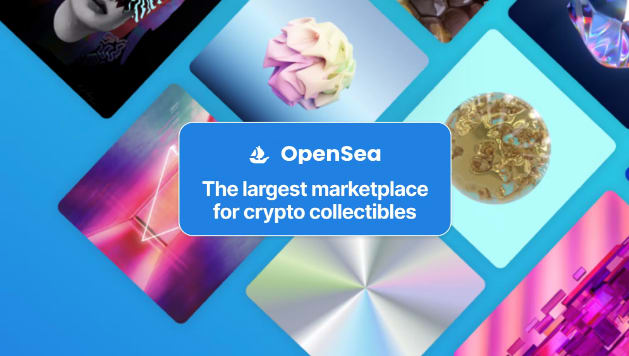
OpenSea is a well-known NFT marketplace that's known for its variety of products and services. It's also one of the most popular platforms for buying and selling art, music, sports, and photography. It's also supported by over 150 cryptocurrencies. This makes it an ideal choice for anyone who wants to start trading and selling their digital assets. Its easy-to-use platform allows users to set up an account and start browsing and minting money.
It recently announced that it's now gas-free through its cross-blockchain support. This means that users can now trade with cryptocurrencies such as the Polygon, without having to pay fees. According to OpenSea, this feature will allow artists to earn money through the exchange.
The NFT marketplace known as the Nifty Gateway is one of the most eye-catching platforms when it comes to big-money NFT sales. In December 2021, two of the most expensive NFTs ever sold were Pak's The Merge and Beeple's CrossROAD.
Despite the platform's popularity on Twitter, it still draws in a lot of celebrity NFTs. One of the most notable features of the platform is its ability to create unlimited editions, which are priced at a base price. This ensures that no more NFTs are issued after the first edition has been sold.
The platform's ability to create unlimited editions and the strong secondary market for NFTs have also helped boost the demand for these products. Another advantage of using the platform is that it allows users to buy NFTs using fiat currency, which is a government-backed currency. This makes it more accessible to new buyers.
3.Binance
One of the biggest cryptocurrency exchanges in the world, Binance, is also one of the largest NFT marketplaces. Its platform is supported by its own blockchain. This makes it one of the most stable and long-term NFT marketplaces.
The platform's massive size and scale allow it to offer exclusive events and partnerships. With the addition of BNB, users can easily access the platform and buy or sell NFTs. Depositing BNB or ETH into the exchange can also help sell your NFTs.
FinTech Trends and Opportunities Overview in 2022 ► Why is FinTech the Future?
To wrap up
The number of Non-fungible tokens (NFTs) in the blockchain business continues to rise. The emergence of the NFT custom marketplace has become an essential component of the existing crypto ecosystem. It is expected to provide a significant boost to the growth of the industry by allowing various individuals and groups to earn money from the blockchain business.
Despite the limited capabilities of the technology, the development of the NFT marketplace continues to gain popularity. The NFT custom marketplace is expected to provide a solution that will seamlessly connect the various facets of the crypto experience. It will allow individuals and groups to earn money from the blockchain business. Don’t miss this opportunity to try to build your own NFT or NFT marketplace now.
FAQ
What is gas fee?
The gas fee is the charge that you have to pay to perform a function on the Ethereum blockchain, such as minting an NFT. The fee can vary depending on the amount of work involved, and it can go up or down. The average cost of a transaction is around 0.0042 ETH. Early in the morning or at night, you can find lower fees.
Can I avoid gas fee?
Some NFT marketplaces, such as Rarible and OpenSea, are now offering gas-free minting. This method places the gas fee on the buyer instead of the creator, and this will show in the sale price. Other platforms, such as ImmutableX and Polygon, have also started offering gas-free minting. Before you buy or mint an NFT, it's important to understand the various fees that are being charged by the various platforms that are using the blockchain.
What is minting?
Like with physical currency, the term minting is used to describe the process of creating a currency or non-fungible (NFT) on the Ethereum blockchain. With NFTs, the data is stored in a public ledger that's unchangeable and tamper-proof. This process can be performed on the blockchain using a gas fee. Although the exact cost of doing so is not clear, some marketplaces are starting to create their own ways of charging the fees.
Can anything be a NFT?
Aside from digital files, there are also various types of objects that can be stored as NFTs. Some of these include music, video, and game assets. In the future, there will also be more NFTs between the physical and digital worlds.
How much does it cost to make NFT?
Aside from the gas fee, there are other expenses that you have to consider when it comes to minting an NFT. One of these is the site fees, which vary from $1 to $500 depending on the site that you're using. You might also have to pay other fees such as those that are related to the listing of the NFT.
How much does it cost to make an NFT collection?
A collection is typically defined as a group of randomly-generated NFTs that range from around 100 to 100,000 items. The cost of creating one can be anywhere from $150 to $10,000 depending on the work that's involved. In addition to the cost of programming the smart contract, you also have to pay for the design and development of a website.
Previously published at maddevs.io/blog.



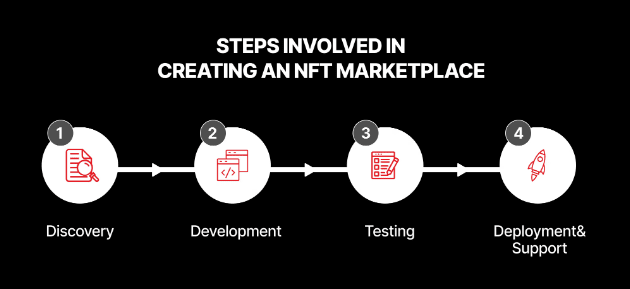
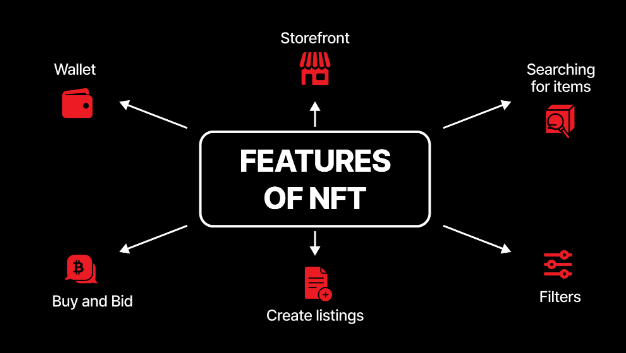

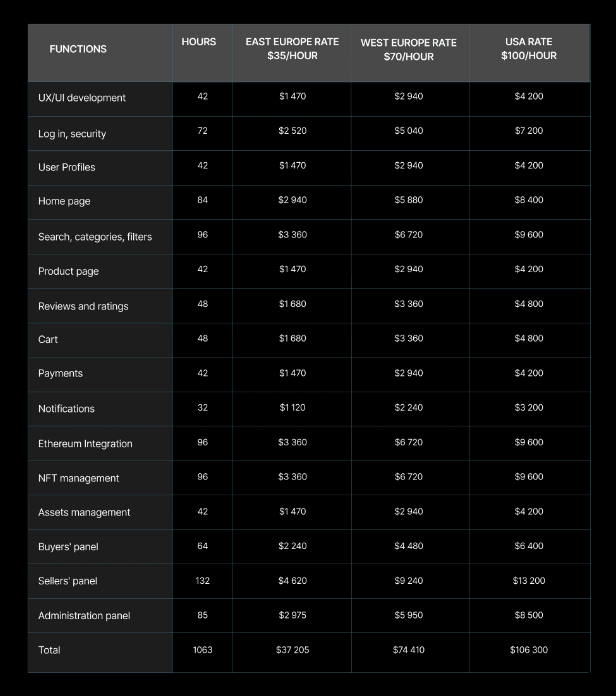
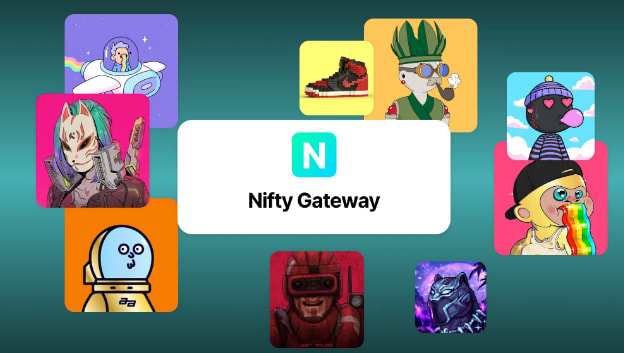




Top comments (0)
Some comments may only be visible to logged-in visitors. Sign in to view all comments. Some comments have been hidden by the post's author - find out more